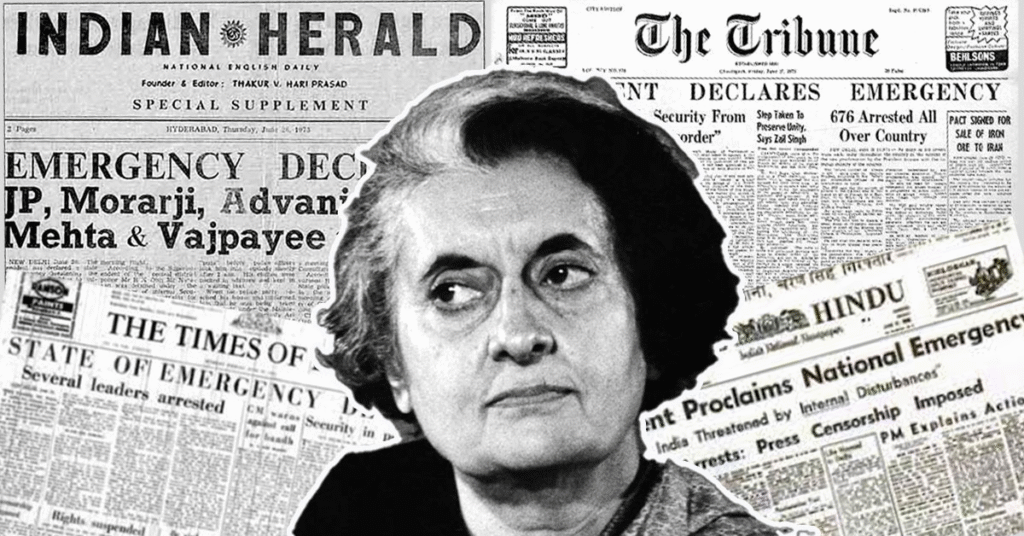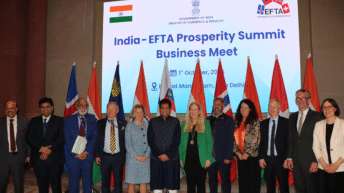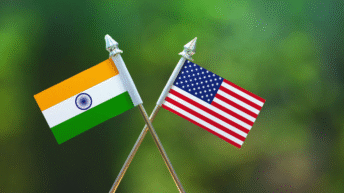
On June 25, 1975, India woke up to find its democratic framework suddenly suspended when Prime Minister Indira Gandhi imposed a nationwide “Emergency” under Article 352 of the Constitution, citing internal disturbance. What unfolded over the next 21 months shook the very foundations of Indian democracy. Now, as we mark its 50th Anniversary in 2025, a date now referred to as ‘Samvidhaan Hatya Diwas’ it’s a moment not just to remember, but to reckon with what it meant and why those lessons still matter.
The country was already on edge in the mid-70s due to high rates of inflation, widespread unemployment, and eroding public trust due to corruption. Student-led protests in Gujarat and Bihar had spread like wildfire, driven by frustration and a growing demand for change. These movements, guided by the prominent socialist leader Shri Jayaprakash Narayan, called for a “total revolution”, a transformation of the system itself.
Things came to a head on June 12, 1975, when the Allahabad High Court found Smt. Indira Gandhi guilty of electoral misconduct in the 1971 general elections. The verdict disqualified her from holding office and created a political storm. Rather than step down, Smt. Indira Gandhi clamped down. Late on the night of June 25, she advised President Shri Fakhruddin Ali Ahmed to declare a national Emergency on the ground of ‘internal disturbance’ arguing that it was the only way to maintain law and order.
The Dark Years: Repression, Resistance and Renewal
The Emergency enabled a broad assault on fundamental liberties. The freedom of expression, the ability to demonstrate and even the ability to seek legal recourse were all restricted and civil liberties were suspended. Newspapers were subject to censorship and occasionally they were compelled to protest by leaving editorial spaces empty. Even the right to life and liberty could be suspended under emergency according to the Supreme Court’s ruling in the ADM Jabalpur case, one of its most contentious decisions. The judiciary would be plagued by this decision for many years to come.
Leading opposition leaders like Shri Jayaprakash Narayan, Shri Atal Bihari Vajpayee, and Shri Morarji Desai were among the more than one lakh people detained. Activists, students, and journalists were arrested without being given a chance to defend themselves. Thousands of people were displaced when Sanjay Gandhi, who was not an elected official, used his enormous informal power to implement coercive policies like forced sterilisation campaigns and slum demolitions in Delhi.
Initially, during the early months of the Emergency, some felt it was the right thing to do. They believed it could stabilise the situation and end the increasing instability in the country. But that hope didn’t last. Reports of police violence and power abuse as well as total repression of all liberties soon exposed the harsh reality. There was fear and tension in the air. Forms of resistance started to emerge. Newspapers responded quietly but powerfully: The Financial Express displayed Tagore’s poetry as a courageous act, while The Indian Express chose to leave blank spaces in the editorials as a form of silent protest. Though silenced, civil society did not disband. In an attempt to maintain the democratic ethos, people began organizing away from the public eye.
Smt. Indira Gandhi, against all expectations, announced new elections in January 1977. Many individuals acted and for the first time since independence a non-Congress coalition i.e. the Janata Party, led by Morarji Desai came to power after routing the Congress Party. The message was clear that those who thought democracy could be cancelled would find no popular support.
Preventing a recurrence of this type of situation became urgent for the new government. In 1978 the 44th Constitutional Amendment came through. It narrowed the reasons for which an Emergency could be declared, using the more specific term “armed rebellion” rather than “internal disturbance”. It also importantly guaranteed that even in a time of crisis the fundamental rights enshrined in Articles 20 and 21 could not be suspended. Judicial independence was slowly restored and the press, after being reamed with the razor blade of censorship, felt a new sense of purpose.
Now, fifty years later, the Emergency is a warning, not a mre chapter in a history book. The current debates over free speech, institutional autonomy, and executive overreach seem eerily similar to those of 1975.
But, it is significant that the government notified in 2024 to commemorate June 25 as ‘Samvidhaan Hatya Diwas’; that name is not merely symbolic; it tells us that democracy requires ongoing participation, awareness, and courage to survive.
We learned a harsh reality from the Emergency i.e. true democracy extends well beyond the voting booth. It’s about having the freedom to express oneself, to question authority without fear, and to trust that our institutions will act morally regardless of those who are in positions of authority. Ordinary Indians took a stand and made their voices heard in 1977. They showed with their votes that they would not be intimidated and they would not put up with a government that made decisions without consulting the people.
Conclusion
Now, as we mark 50 years since that turning point, this moment shouldn’t just be about looking back. It should push us to ask ourselves what kind of democracy we want to live in and what we are doing to protect it. The Constitution, nearly drowned out during those dark months, still has a voice. But its strength depends on us the very ‘WE THE PEOPLE’ as written in the Preamble of the Constitution.
Once silenced during those gloomy months, the Constitution continues to speak. However, we, the very people it was intended to protect, must give it strength.
To honour this anniversary is not only to pay homage to the victims of repression, but also to honour those who had the courage to resist it. As Rabindranath Tagore most beautifully said let us continue to strive toward an India “where the mind is without fear and the head is held high”.
References
1. State of U.P. v. Raj Narain; AIR 1975 SC 865
2. ADM Jabalpur v. Shivkant Shukla; AIR 1976 SC 1207






Add comment